
Heatsinks and an overclocking BIOS
The heatsink stack has an interesting arrangement inside, with what appears to be an aluminium plate connecting the CPU to two of the heatpipes that are soldered on top. This is then layered onto a copper plate, with another heatpipe and set of fins, which is then layered with yet another set of fins before being cooled by the fan. It doesn't take a stretch of the imagination to understand that so many stages are going hinder thermal transfer - this is certainly an area that needs testing.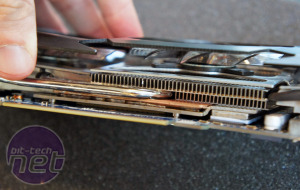
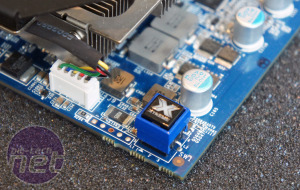
Gigabyte's heatsink/heatpipe stack looks... interesting; there's a BIOS button at the back of the card
The dual-BIOS has been changed from having the second as a backup to instead having an alternative BIOS that is specifically designed for extreme cooling to help prevent cold-bugging. Okay, so 99 per cent of us need never bother with this button, but given that the GTX 480 SOC is Gigabyte's ultimate graphics product, it's an understandable addition for the top-end market it's aimed at: a few people might want to push it for world-record attempts.
A quick comparison
We even got time for a sneaky comparison against MSI's N480GTX Lightning too. The MSI cooler uses five heatpipes and two 90mm fans versus the three 80mm fans that the Gigabyte uses.
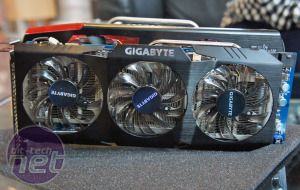
Comparing the Gigabyte GeForce GTX 480 SOC vs the MSI NGTX480 Lightning: both are about the same length, but the MSI has a fatter PCB and cooler
MSI also uses a 12-phase power design for the GPU, but splits the power delivery into two sets of six phases, each powered by the 8-pin power connector, with the three memory phases powered by the additional 6-pin power input. Gigabyte opts for a more traditional approach by putting all 12+2-phases through the combination of the 8- and 6-pin power connectors. On the back side, both companies use Proadlizer capacitors, although Gigabyte opts to use one more than MSI.
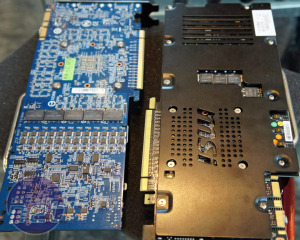
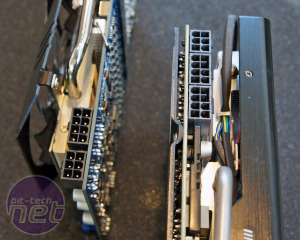
The MSI has an additional aluminium cover to prevent electrical shorts when multiple cards are stacked closely in SLI, but it also requires an extra 8-pin power connector
Which overclocks more though? We've already seen MSI's N480GTX Lightning reach a GPU core frequency of over 1,400MHz (with stream processors running in excess of 2,800MHz) in one instance, but ultimately it'll likely end up being down to the luck of picking a quality Nvidia GF100 die that goes onto each board. Keep your eyes on the overclocking leader boards to see who'll win out!

MSI MPG Velox 100R Chassis Review
October 14 2021 | 15:04








Want to comment? Please log in.